Gà kho (Vietnamese caramelized chicken) is a recipe you shouldn’t miss if you’re a fan of Vietnamese cuisine. This family favorite combines succulent chicken pieces with a sweet and savory caramel sauce that is simply irresistible.
Not only is this dish a feast for your eyes and taste buds, but it also uses simple ingredients and is surprisingly easy to make. Let’s jump right into today’s post to experience the bold flavor of this Vietnamese classic!
Explore The Beauty Of Vietnamese “Kho-Style” Chicken
“Kho,” loosely translated to “braise” or “stew,” is one of the oldest and most popular techniques in Vietnamese cooking. This traditional cooking method involves simmering poultry, meat, or seafood in a flavorsome sauce that’s usually a mixture of fish sauce, spices, and coconut water.
Vietnamese cooks, with their mastery of combining aromatics and condiments, have come up with numerous delectable “kho” dishes.
For example, cá kho tộ is a delicacy featuring tender fish cooked to perfection in a flavor-packed sauce. Mắm kho quẹt, which originated as a way for farmers to utilize whatever they had in their kitchens and gardens during hard times, is another must-try.
Among the many kho recipes, gà kho is undoubtedly the one I adore the most. The chicken soaks up the marinade and sauce excellently, creating an explosion of flavors with every bite.
Tools Used to Prep Gà Kho
Before diving into the cooking process, you should ensure you have the following tools on hand.
Gà Kho Ingredients
Here are all the ingredients you’ll need to make the authentic gà kho in Vietnamese style.
Steps of Making Gà Kho
Now that all the preparation is done, it’s finally time to start cooking with the step-by-step instructions below.
Step 1: Prepare The Ingredients
Find the coconut eye on top of your coconut and pierce it using a knife or scissors. Drain about 8.5 ounces of coconut water. If you can’t find a whole coconut, feel free to use canned coconut water instead.
Cut each chicken thigh into 3 parts.
Step 2: Marinate The Chicken
Season the chicken with:
Mix well and marinate for at least 30 minutes.
Step 3: Cook The Chicken
Add olive oil to a heated pan. Fry the minced garlic and shallots until fragrant. Then, stir in:
Cook for 1 to 2 minutes or until they turn aromatic.
Add the chicken thighs to the pan and saute them to give them a slight sear.
Pour in the coconut water. Cook the chicken for about 30 minutes on medium-low heat or until the sauce is thickened.
Occasionally flip the chicken and spoon the sauce over them.
Step 4: Present The Dish
Once the chicken is fully cooked and the sauce has thickened nicely, sprinkle some scallions and ground pepper on top. Serve with steaming hot rice or boiled veggies, like okra, gourd, cabbage, and broccoli.
Notes in Cooking Gà Kho
Here are 4 key notes to remember when you cook your caramelized chicken.
Enjoy Caramelized Chicken In Vietnamese Style!
Vietnamese caramelized chicken is a wonderful and easy dish that’s overflowing with flavor. The combination of savory flavor and juicy chicken is simply unmatched. After trying this recipe, I’m sure you’ll become a fan of “kho” delicacies in Vietnamese cuisine.
Did you enjoy this recipe? If yes, please show your support by liking this post and leaving a comment below. Moreover, it would be fantastic if you could share today’s recipe with other people.
Thank you for reading, and have fun cooking!
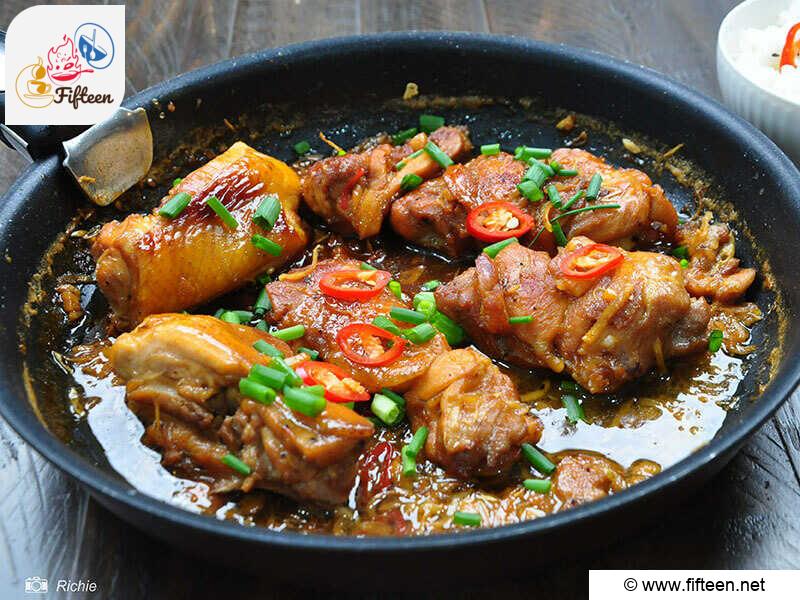
Gà Kho Recipe (Vietnamese Caramelized Chicken)
Equipment
- Pan
- Tongs
- Bowl
Ingredients
- 2 boneless chicken thighs (about 1.1 pounds or 500 grams)
- 1 coconut
- 0.7 ounces minced garlic
- 0.7 ounces minced shallots
- 0.7 ounces julienned ginger
- 2 lemongrass stalks, thinly sliced
- 1 chili pepper
For the marinade
- 5 teaspoons salt
- 5 teaspoons Vietnamese caramel sauce, Nuoc Mau
- 3 teaspoons soup powder
- 3 teaspoons oyster sauce
- 3 teaspoons soy sauce
- 2 teaspoons brown sugar
- 2 teaspoons ground pepper
- 2 teaspoons garlic powder
Instructions
- Find the coconut eye on top of your coconut and pierce it using a knife or scissors. Drain the coconut water.
- Cut each chicken thigh into 3 parts.
- Season the chicken with salt, caramel sauce, soup powder, garlic powder, soy sauce, oyster sauce, brown sugar, and ground pepper.Mix well and marinate for at least 30 minutes.
- Add olive oil to a heated pan. Fry the minced garlic and shallots until fragrant.Stir in the ginger, chili pepper, and lemongrass. Cook for 1 to 2 minutes or until they turn aromatic.
- Add the chicken thighs to the pan and saute them to give them a slight sear.
- Pour in the coconut water. Cook the chicken for about 30 minutes on medium-low heat or until the sauce is thickened.
- Occasionally flip the chicken and spoon the sauce over them.
- Once the chicken is fully cooked and the sauce has thickened nicely, sprinkle some scallions and ground pepper on top.Serve with steaming hot rice or boiled veggies, like okra, gourd, cabbage, and broccoli.
Video
Notes
- The cooking time is based on 4 servings.
- Ideally, you should marinate the chicken for 2 to 4 hours in a refrigerator.
- The cooking time might change depending on the type of chicken used. Free-range chicken typically takes longer to cook.
- You can freely adjust the seasonings to your liking.
- The longer you cook the chicken thighs, the more sauce they will absorb. However, the chicken will dry out if you cook them for too long.


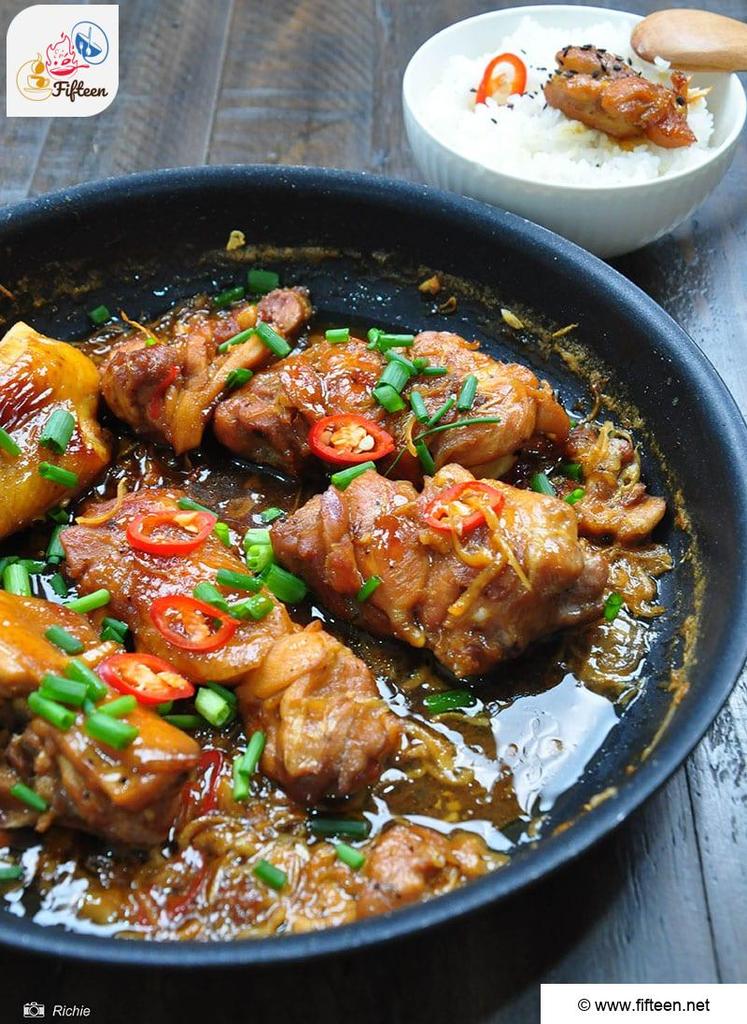
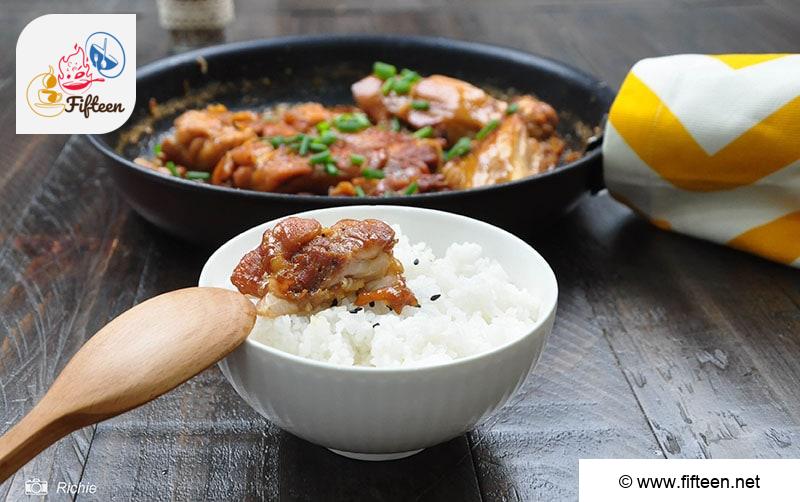
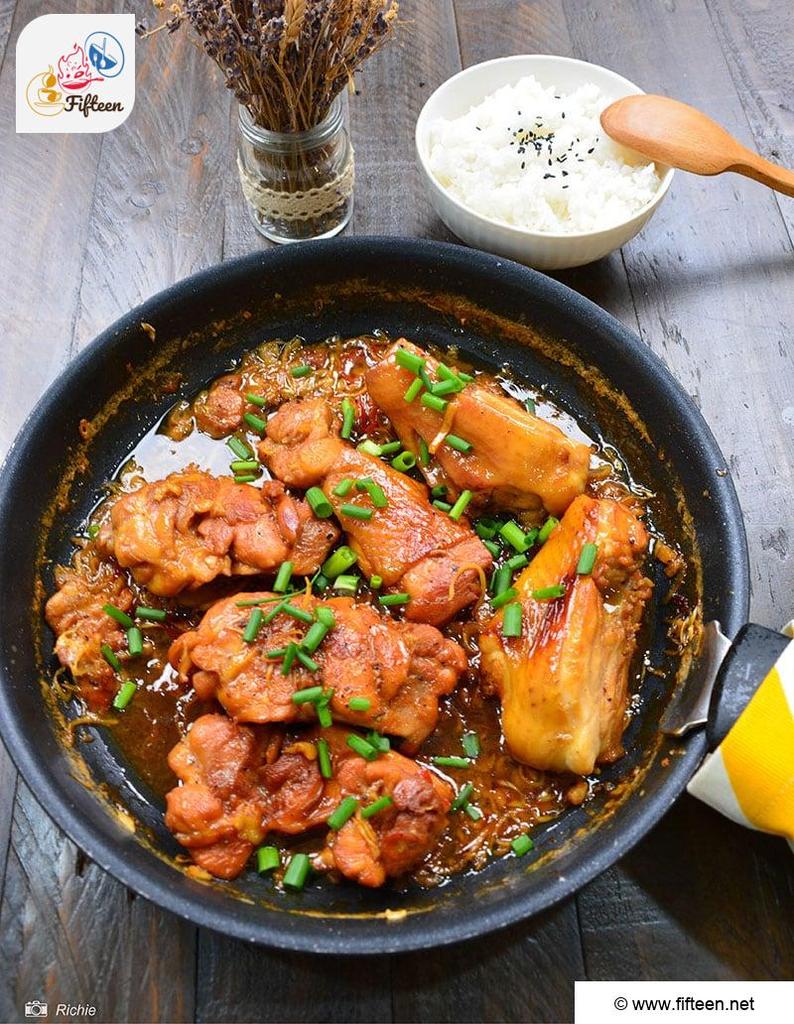
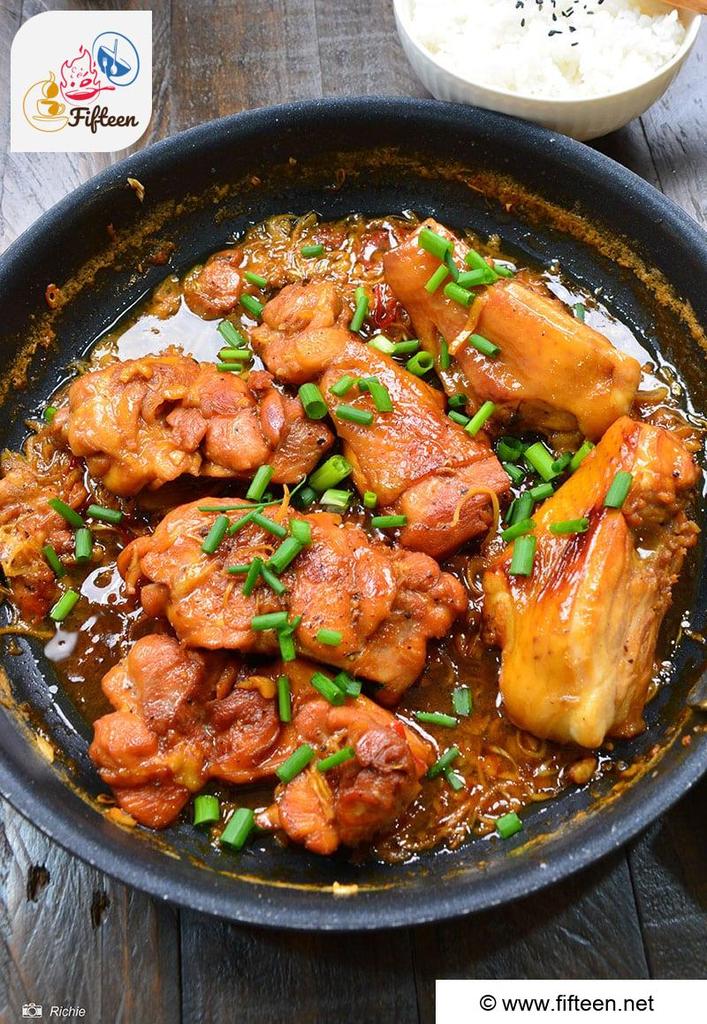

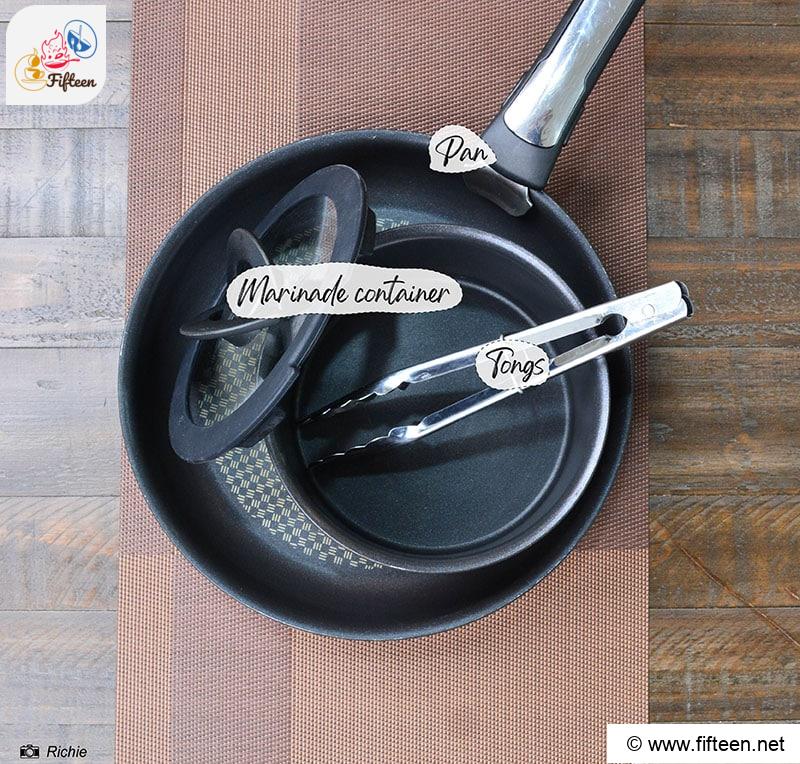
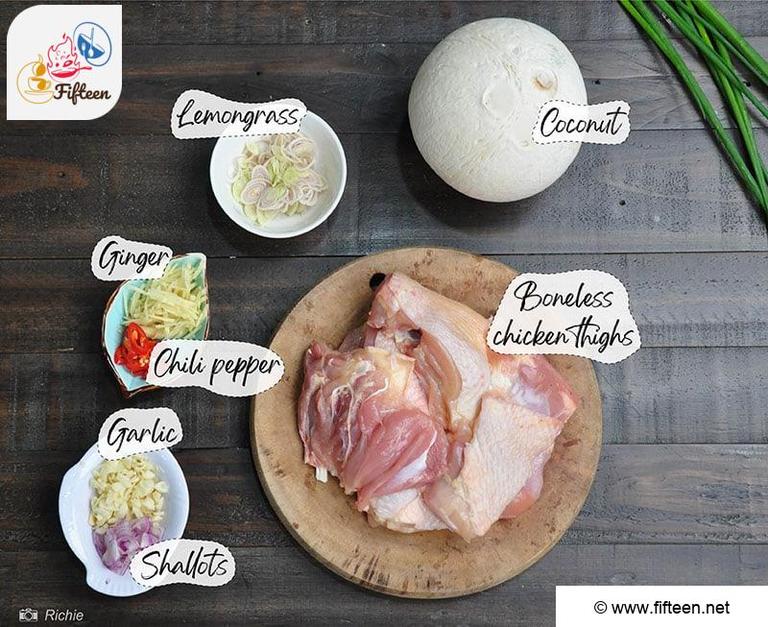
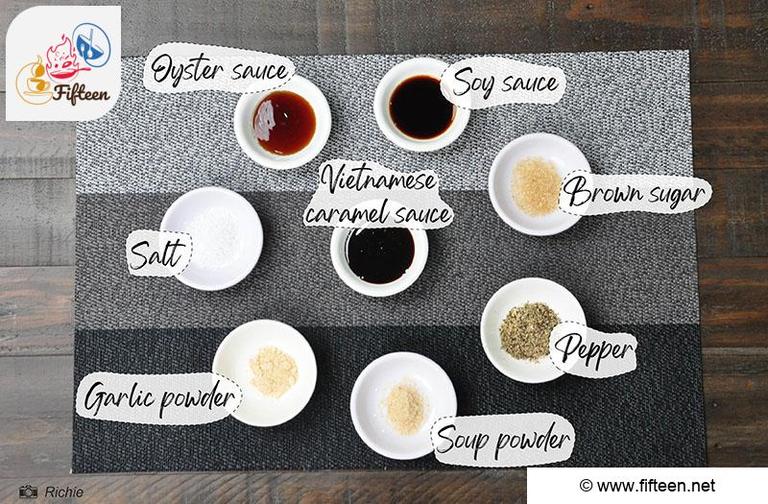
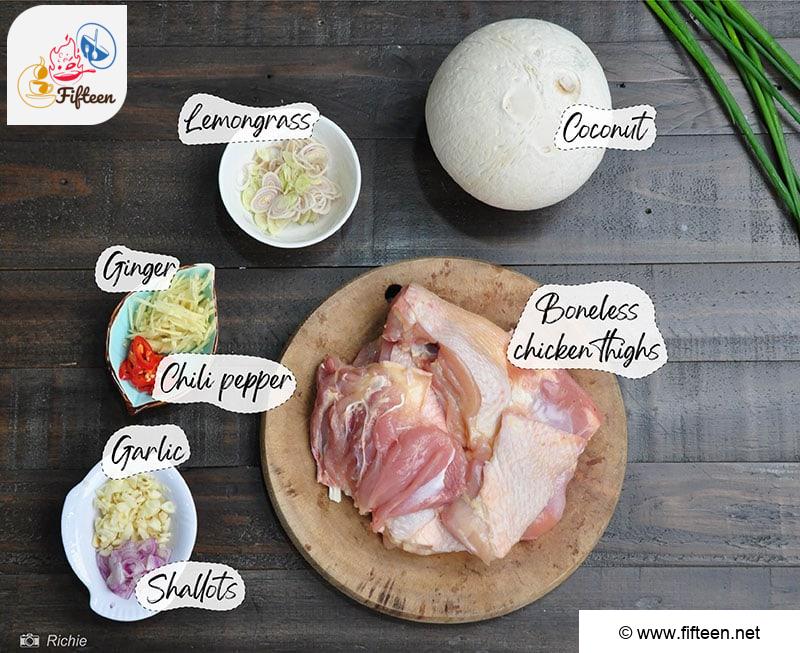
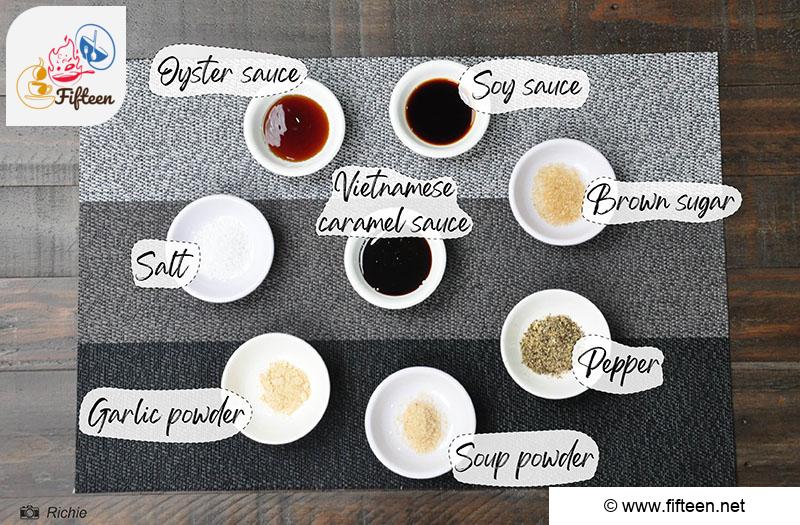
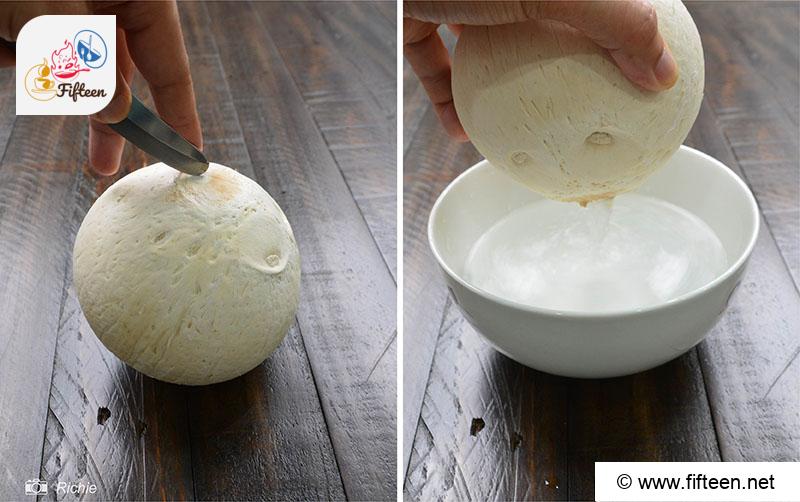
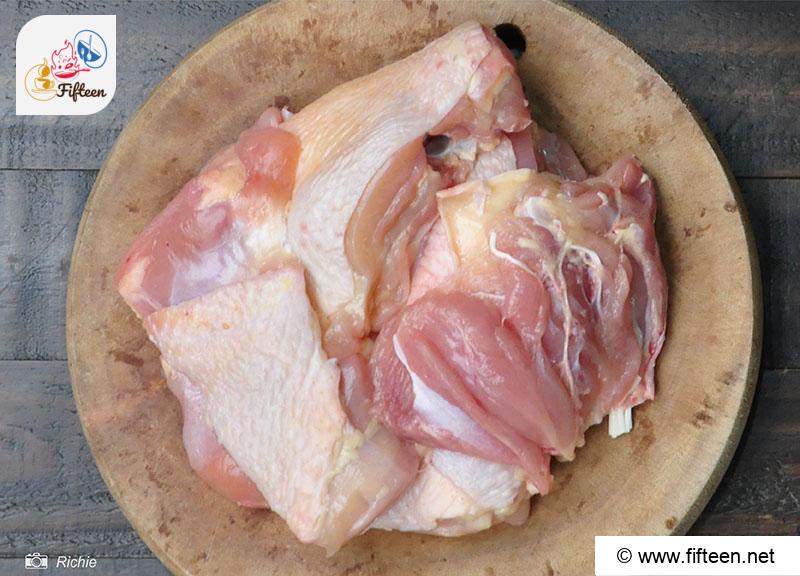
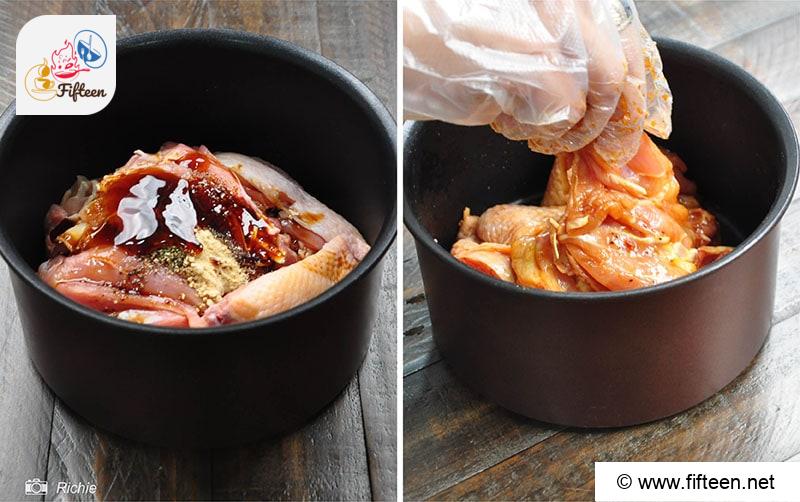
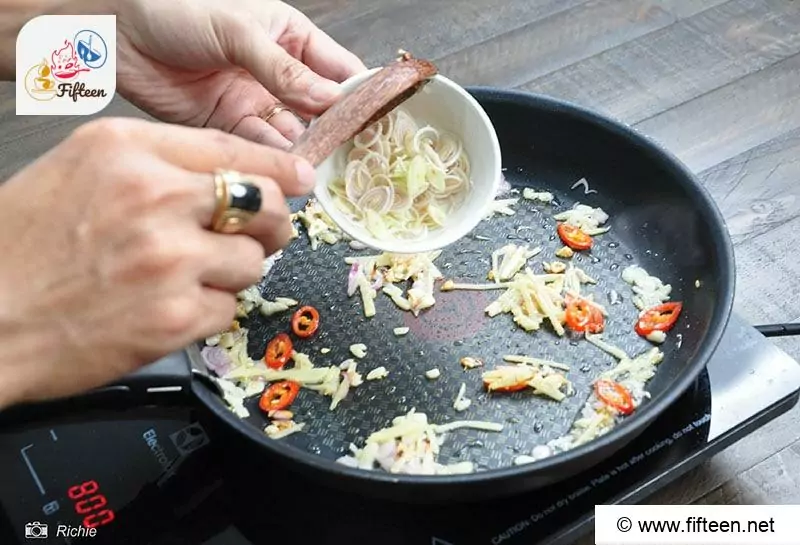
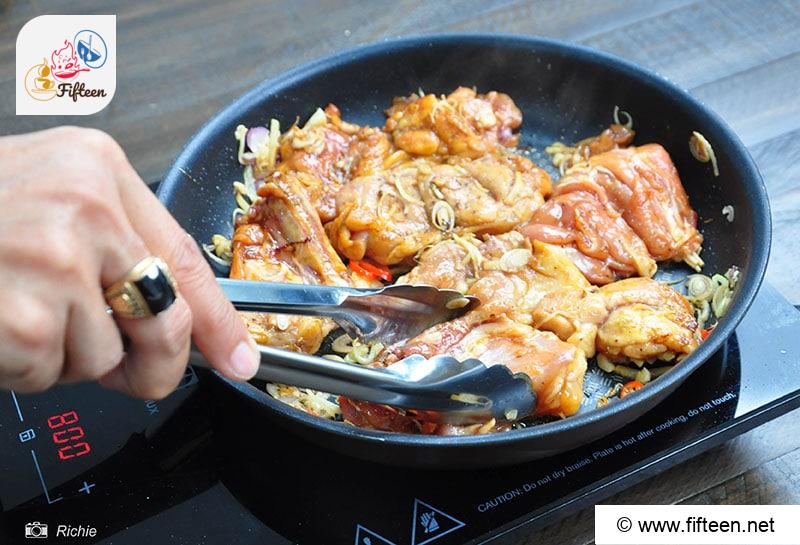
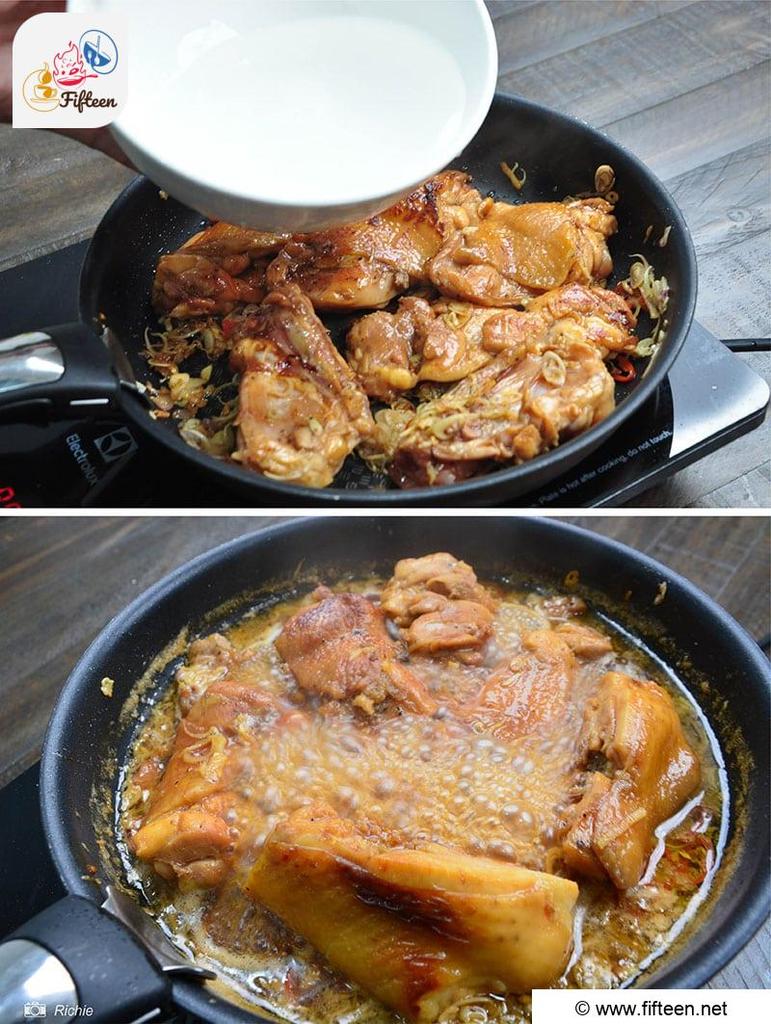
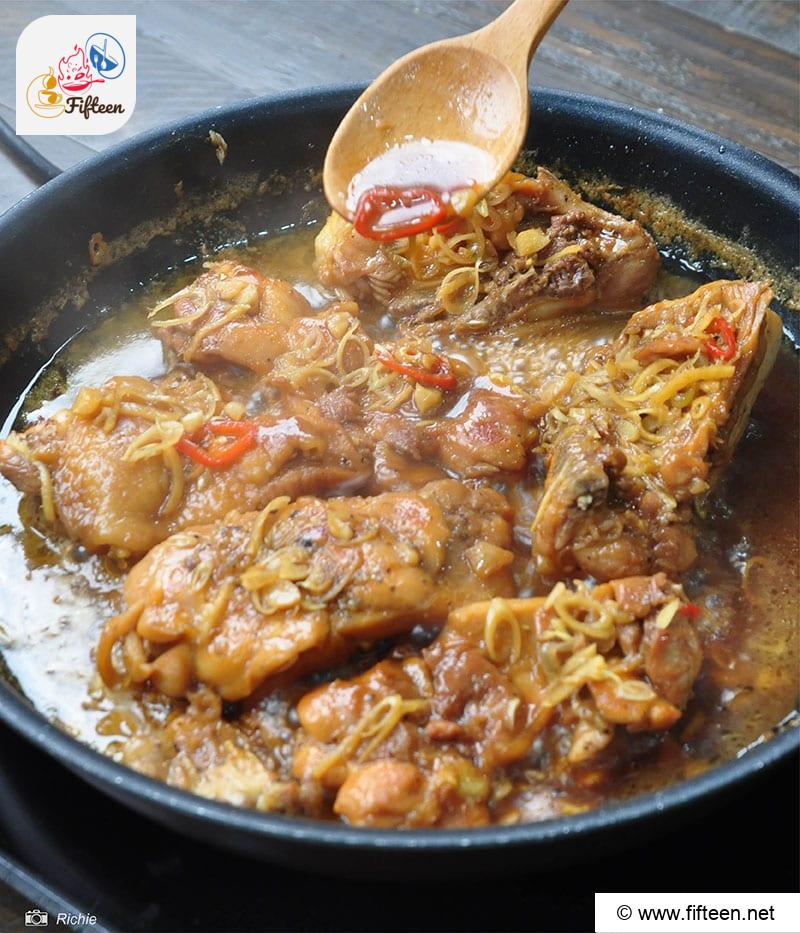
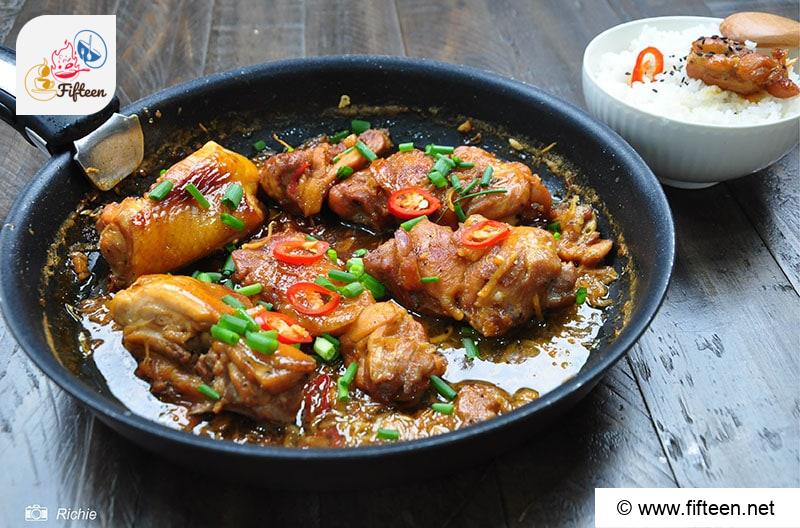
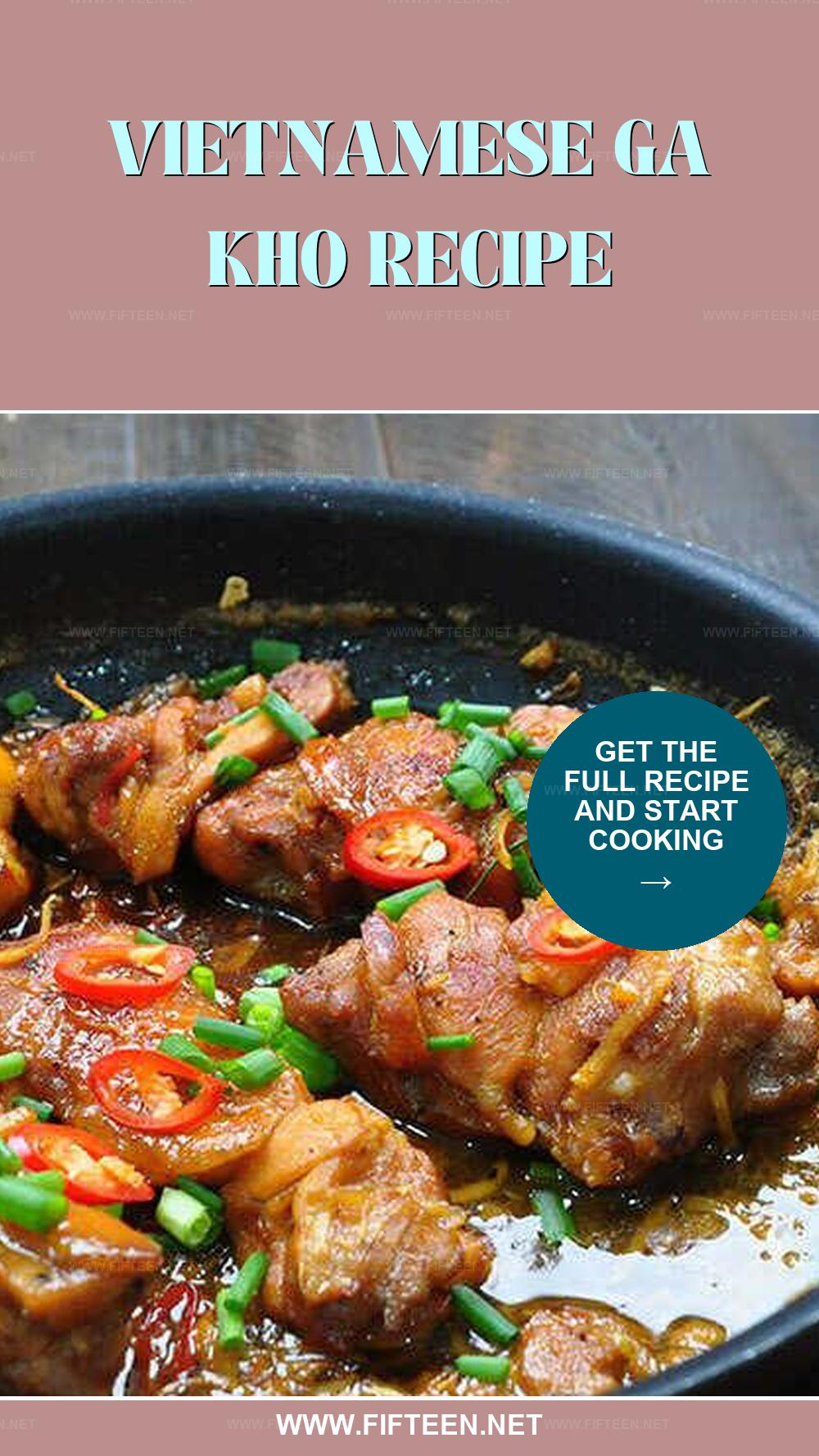
Richie
Content Writer
Expertise
Home Cooking, Meal Planning, Food Styling, Food Photography, Cooking-video Maker, Beverage Evaluation Expert
Education
Saigon Culinary Arts Centre, Ho Chi Minh City, Vietnam
Vietnam Australia Vocational School (VAAC), Hanoi, Vietnam
Richie, based in Ho Chi Minh City, Vietnam, is a dynamic Content Writer with a talent for capturing the essence of culinary art.
Richie specializes in creating visually appealing and tasty content, offering a new angle on Vietnamese and other culinary traditions. With a background in graphic design and a love for food styling and photography, he expertly combines beauty with food narratives, encouraging his audience to discover the culinary world through his imaginative perspective.